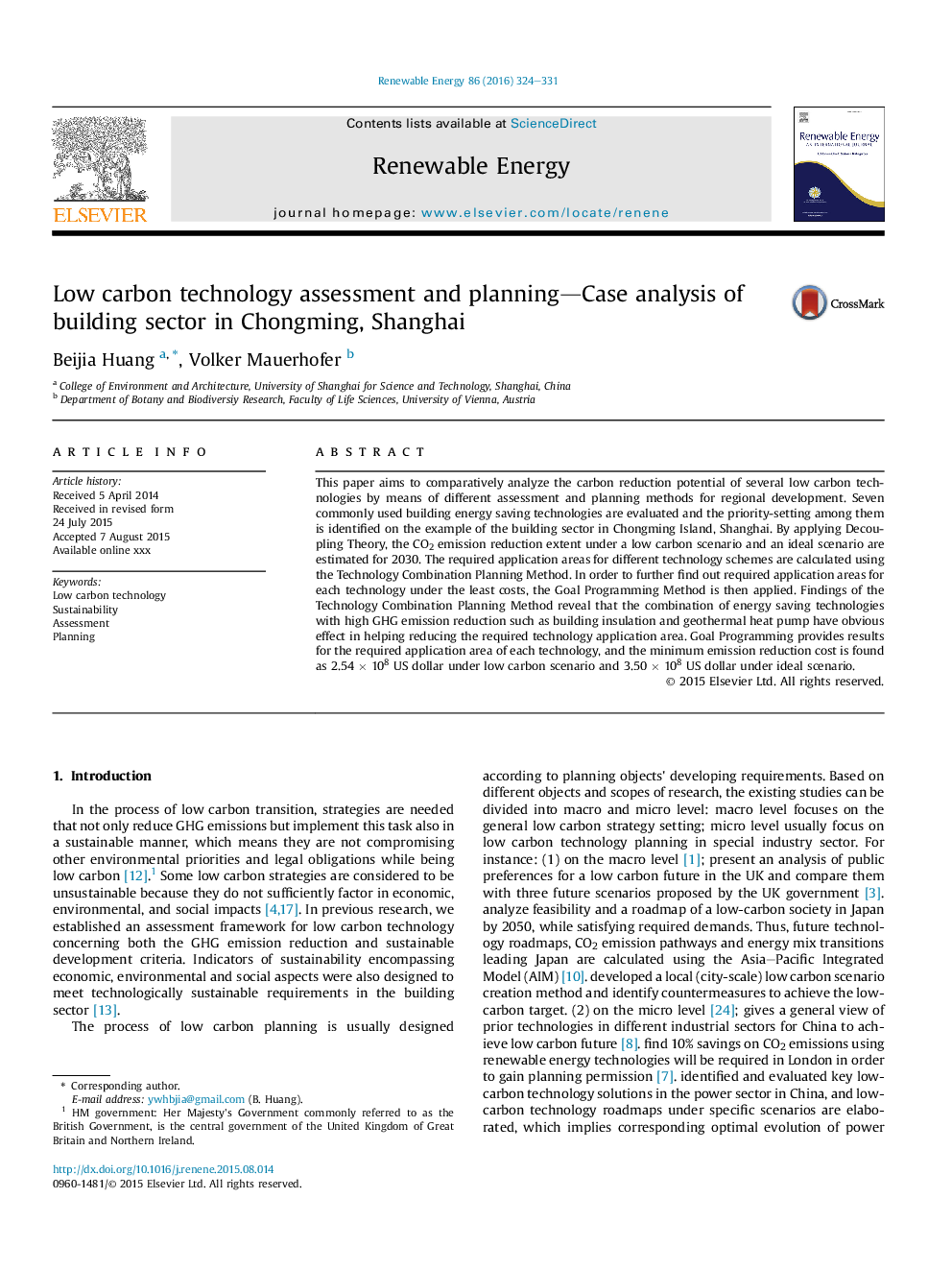| Article ID | Journal | Published Year | Pages | File Type |
|---|---|---|---|---|
| 6766399 | Renewable Energy | 2016 | 8 Pages |
Abstract
This paper aims to comparatively analyze the carbon reduction potential of several low carbon technologies by means of different assessment and planning methods for regional development. Seven commonly used building energy saving technologies are evaluated and the priority-setting among them is identified on the example of the building sector in Chongming Island, Shanghai. By applying Decoupling Theory, the CO2 emission reduction extent under a low carbon scenario and an ideal scenario are estimated for 2030. The required application areas for different technology schemes are calculated using the Technology Combination Planning Method. In order to further find out required application areas for each technology under the least costs, the Goal Programming Method is then applied. Findings of the Technology Combination Planning Method reveal that the combination of energy saving technologies with high GHG emission reduction such as building insulation and geothermal heat pump have obvious effect in helping reducing the required technology application area. Goal Programming provides results for the required application area of each technology, and the minimum emission reduction cost is found as 2.54Â ÃÂ 108 US dollar under low carbon scenario and 3.50Â ÃÂ 108 US dollar under ideal scenario.
Related Topics
Physical Sciences and Engineering
Energy
Renewable Energy, Sustainability and the Environment
Authors
Beijia Huang, Volker Mauerhofer,
